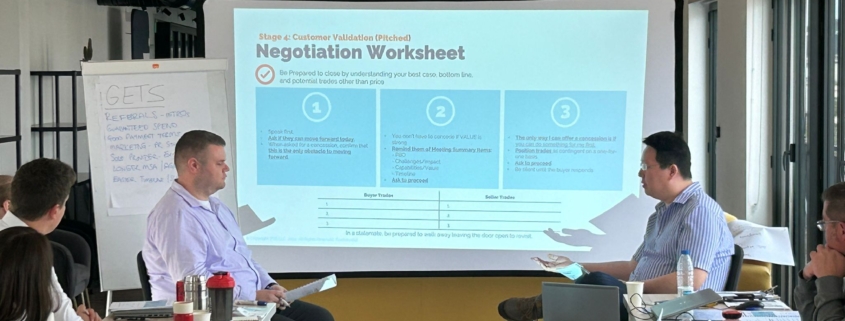 If your sales conversations with buyers seem too focused on price, they probably are. Why is that happening? Because the buyer only sees what you’re selling as a commodity, meaning interchangeable goods indistinguishable from the competition’s.
If your sales conversations with buyers seem too focused on price, they probably are. Why is that happening? Because the buyer only sees what you’re selling as a commodity, meaning interchangeable goods indistinguishable from the competition’s.
In a buyer-seller relationship, the verb commoditize often applies. It’s what the buyer tries to do to you during a sales cycle, to make you think that your product or service is interchangeable with other brands so they can beat you up on price.
Does that sound familiar? Probably! No matter what you’re selling, at some point in the sales cycle, usually near the end after the deal is forecast to close at “the end of this quarter,” the buyer starts treating your product or service and even YOU as a commodity. You will suddenly hear them say things like, “I can get the same thing elsewhere for a lower price.” They would happily replace you too as well with a different salesperson. That is unless, of course, you’ll admit that they are right by discounting the price.
How Buyers Get the Seller to Only Talk About Price
You know that your products or services aren’t the same as the competition’s, but you probably find yourself in this price-focused situation more often than you would like. And now you’re “buying in” to the idea that yes, it is just a commodity you’re selling. Buyers repeatedly tell you that the criterion for product or service selection in your industry is based on “best price,” so you’ve become convinced that you have to discount in order to win business. And now you too are price-focused.
Here’s what typically happens: You meet with a potential customer, anxious to describe or demonstrate the high-quality, amazing, customer-friendly, popular, easy-to-use, etc. capabilities and benefits of your offering. The customer seems interested and asks you for a price quote. Back at the office, you convince your manager that you could “win this” if she’d just discount a little bit.
What has happened? You let the buyer make it about price and you fell for the idea that you’re only selling a commodity. You were guilty of prescribing your products or services without first diagnosing the unique needs of the person you were talking to. And that’s a form of selling malpractice. You accepted the product or service and even yourself as a “me-too” solution, allowing commoditization to occur.nAt Flannery Sales Systems, we’ve heard stories like these for years, in every industry we have worked in.
You set yourself up as a commodity by failing to position the unique capabilities of your offering in order to differentiate your product or service within a competitive environment. Your customers didn’t have the experience to know what separated you from your competitor. It was your job to assist them in making a valuable connection between their needs and your unique selling proposition so they could see that your organization could provide them with something that the competition couldn’t. You missed the opportunity to win.
Differentiation Takes the Conversation Away from Price
Flannery Sales Systems helps organizations develop a process for diagnosing the potential needs and objectives of target customers, and providing those customers with specific objectives that they should be focused on in their industry. In doing so, we can help you position your unique products or services in a way that a potential customer will see your differentiator as a “must have,” avoiding the “It’s all the same to me” scenario. You have the option: position your own goods, or your competition will do it for you, and you’ll end up with the limited options of discount or be dismissed.

 For years
For years Your Sales
Your Sales Value proposition is a phrase that became ubiquitous during the 90’s dot.com (dot bomb?) era. You may still encounter this, or the “value messaging” term on a regular basis in the business world. Buzz word or not, value messaging will help quickly convey the value of your product or service without overwhelming or boring potential customers away in a landslide of features and benefits dumping.
Value proposition is a phrase that became ubiquitous during the 90’s dot.com (dot bomb?) era. You may still encounter this, or the “value messaging” term on a regular basis in the business world. Buzz word or not, value messaging will help quickly convey the value of your product or service without overwhelming or boring potential customers away in a landslide of features and benefits dumping.


